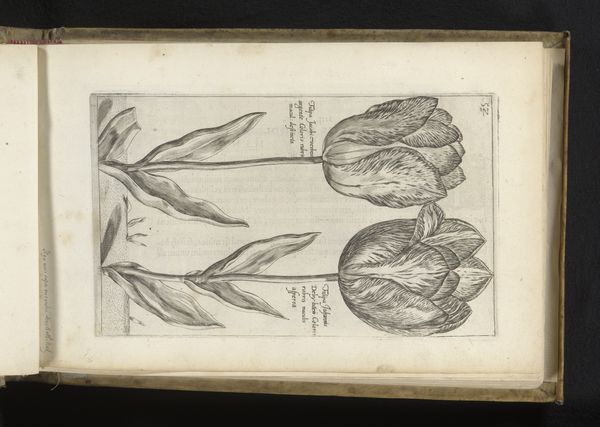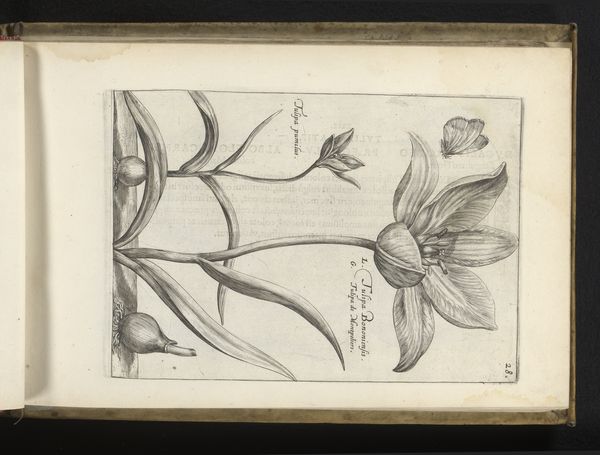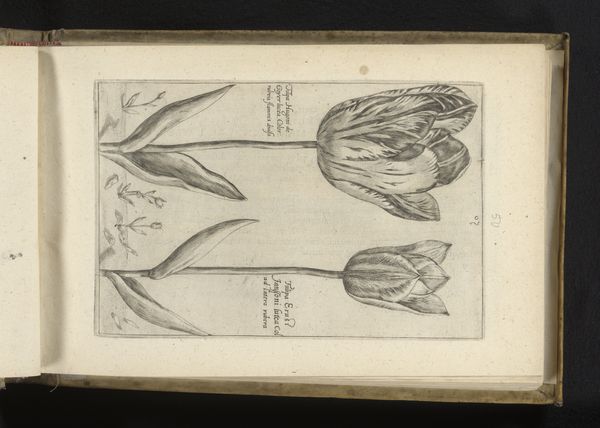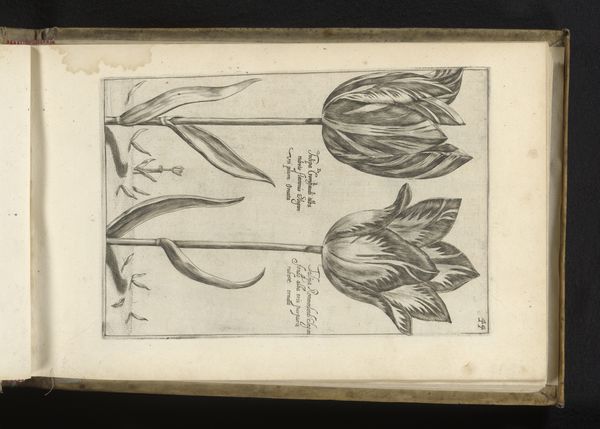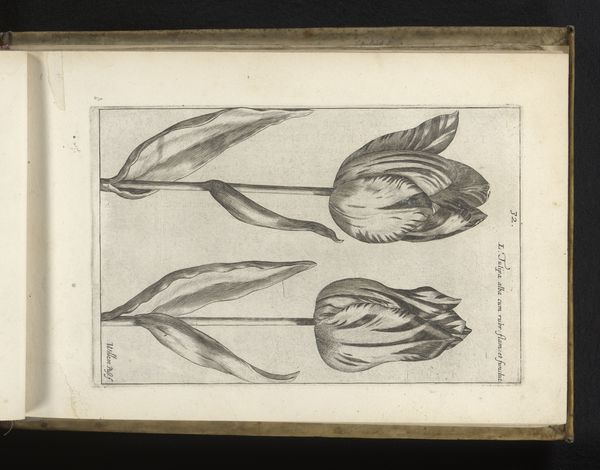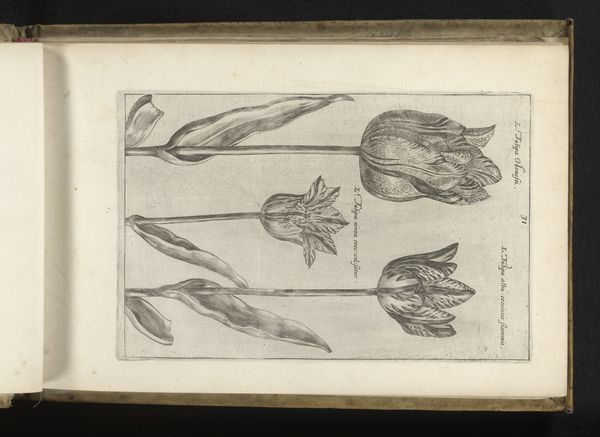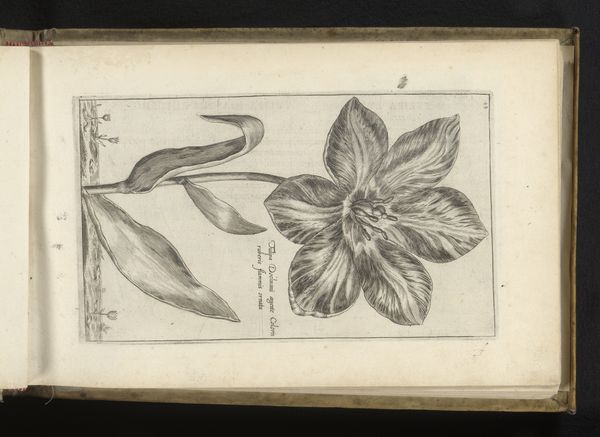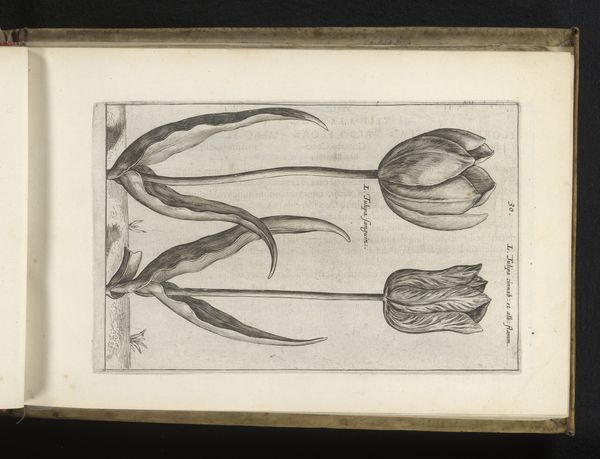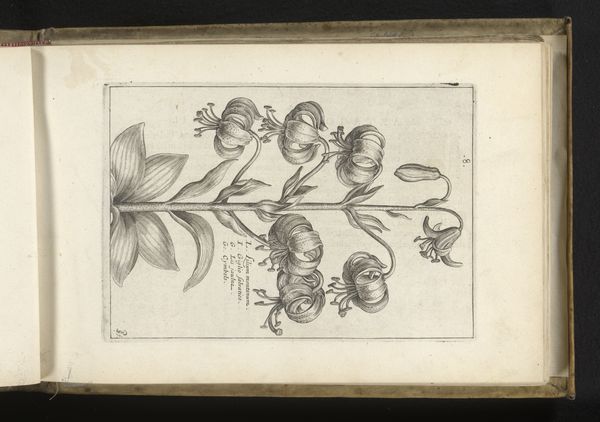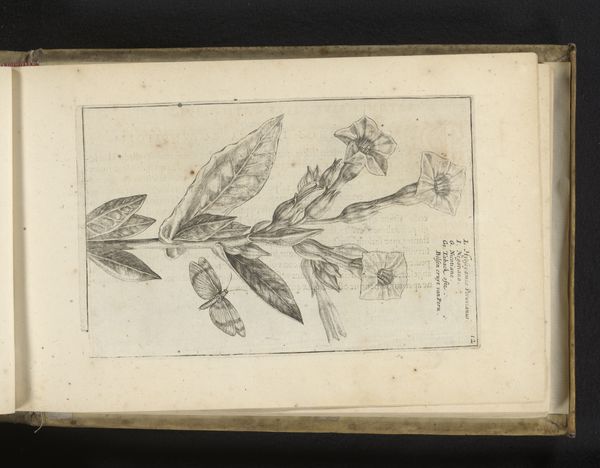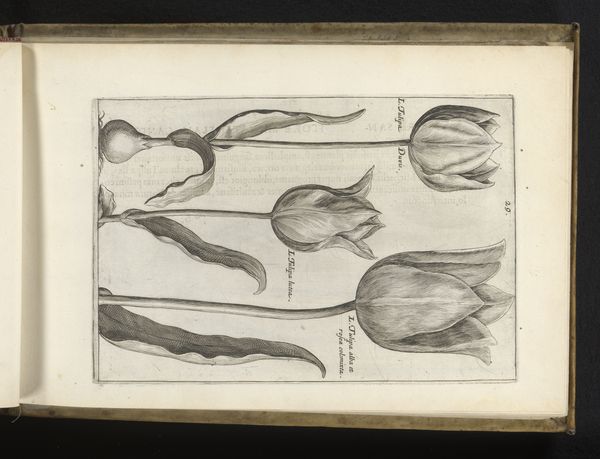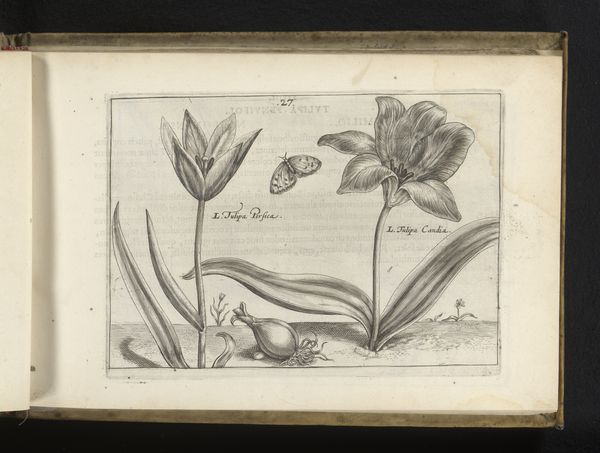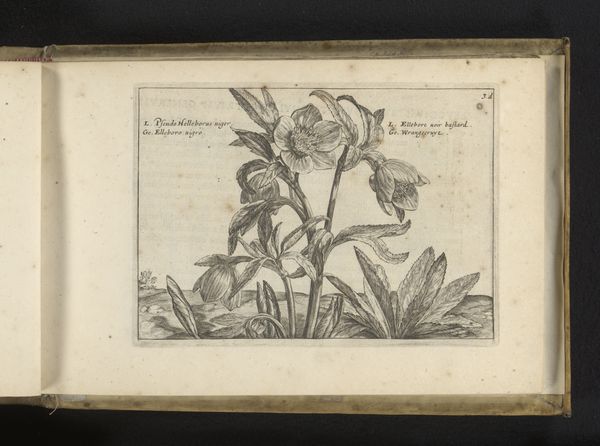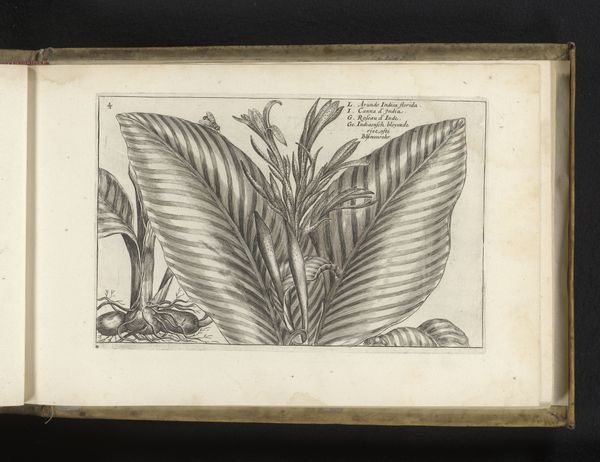
drawing, print, paper, pen
#
drawing
#
baroque
#
dutch-golden-age
# print
#
flower
#
paper
#
geometric
#
pen-ink sketch
#
pen work
#
pen
Dimensions: height 224 mm, width 145 mm
Copyright: Rijks Museum: Open Domain
This engraving of two multicoloured tulips is by Crispijn van de Passe the Younger, made sometime before his death in 1670. Van de Passe created this image during the height of “Tulip Mania” in the Dutch Golden Age, when speculation in tulip bulbs briefly made them the most expensive commodity in the world. But it is important to remember that this wasn’t just about economics. Flowers, and particularly tulips, were fashionable subjects, often used to signal wealth, taste, and worldliness. Although open to interpretation, the presence of tulips can be read as a projection of cultural identity and social aspiration, and their value was further inflated through artistic representations like this. While many Dutch masters are known for their flower paintings, prints like this one made flower imagery more widely available. Consider the historical and cultural context that shaped this botanical illustration, and the quiet beauty that these flowers held. It’s a reminder of the complex interplay between nature, art, and society.
Comments
No comments
Be the first to comment and join the conversation on the ultimate creative platform.
